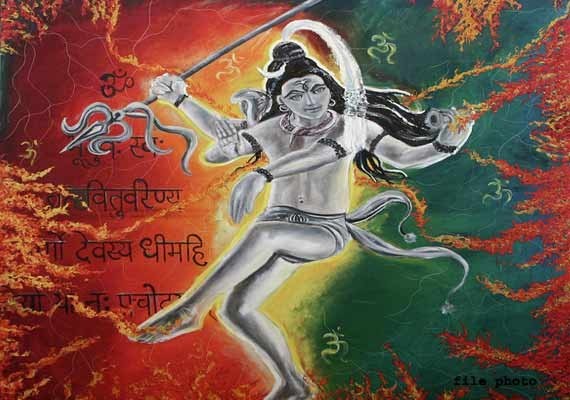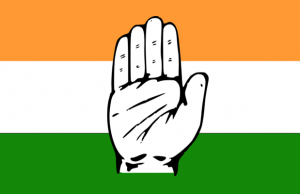TIME TO CLAIM OUR ARTS

“Each race contributes something essential to the world’s civilization in the course of its own self-expression and self-realization. The character built up in solving its own problems, in the experience of its own misfortunes, is itself a gift, which each country offers to the world. The essential contribution of India then, is simply her Indian-ness. Her great humiliation would be to substitute or to have substituted for this own character (svabhava) a cosmopolitan veneer, for then indeed she must come before the world empty-handed.” –Ananda K. Coomaraswamy in ‘The Dance of Shiva’ – Fourteen Indian Essays written a century ago.
It is evident that whatever India offers the world is marked positively or negatively by who we are. This Indian-ness comes as much from the wisdom of vernacular texts, as it does from the philosophy of the common man. This is something we inherit unconsciously, and has a distinctive bearing upon whatever we are doing, irrespective of our individual beliefs.
Our texts speak of satyam, shivam, sundaram – of truth, divinity and beauty. Our people have believed in the essential unity of all life, in eternity, in compassion and in tolerance. That we are in many ways a divided nation, have little respect for life, are extremely prejudiced and intolerant is also true and part of the complex nature of our society. And strangely, in spite of a new skepticism and disillusionment with religion, yet, from generation to generation, there is a constant endeavor among people to understand the meaning of the truth. God-men are on the rise and in a country that has sheltered all the major religions of the world! This svabhava or Indian-ness along with the innumerable tangible and intangible expressions of the country makes up for India’s enviable ‘soft power’.
India’s indigenous arts – tangible and intangible, are arguably our greatest wealth. From the arrival of scholars to Nalanda, to the resilient guru-shishya parampara, the traditional gurkulas – from the Himalayan monastic and Vaishnavite traditions of the North East to the Vedic chanting traditions of the South, the nomadic gypsy and story-telling traditions of the West to the Baul travelling minstrels of the East – all these, and innumerable nuggets of art reside in the villages and homes of our people and serve to spread the soft power and strength of different societies.
In the early part of the previous century came the setting up of modern ashrams of learning – Shanti Niketan, Kalakshetra and Kalamandalam. These were forerunners in the attempt to create new seats of learning that would blend the study of Western languages, and the sciences, with the beauty and strength of India’s vernacular traditions, but most of all, to disseminate the shastras and vedic texts and to uphold the philosophical traditions of the country for children of a new independent India. They became catalysts for creating an awareness of our traditions – first, among the political leaders of the time, and then to foreign scholars and artists; but critically, began to open the doors of access to a new generation of Indians without bias of caste or religion to the arts.
The setting up of the national or apex cultural bodies in the 50’s, made the central body responsible for the protection and preservation of the arts and literature. Globalization led to the arts being used to project India’s soft power to the world through the Festivals of India, but also, and vitally as a delicate tool of diplomacy. Soft power won over the world for us, not wars, or money-speak, nor even the brain drain from India to Silicon Valley.
Gandhiji’s non-violence and non-cooperation won us our independence. Nehru’s anti-colonialism, non-alignment, anti-nuclear stand won independence for many African countries. His anti-apartheid stand helped Mandela. He opened our doors to the Tibetan people for which we continue to reap admiration of the world. India’s films are loved in countries across the world. Our engagement and success with the English language and the variety of our culinary expressions have made waves. Language – is one of our biggest strengths. Indian children are comfortable with more than one language, and with multiple religions. Those who believe that English and regional literature need to be polarized for the growth of the latter, you might want to consider the dominance of major regional languages over minor ones and those, over dialects without scripts. Even though we do not have access, one has to appreciate that several regional literary writings are stronger than English. Is the effort made to translate the literary genius of the Indian vernacular expressions into English or to other major languages enough?
Language, for me as a dancer is also the language of gesture, movement, poetry, ragas and talas – these are also the essence of our identity and major tools for the exchange of ideas, emotions and the philosophy of a people. Bollywood is not the only thing making its way into theatres across the globe. So has yoga, classical, folk and popular music, dance and theatre, designer clothes and accessories, herbal cosmetics and designer weddings, books and art works, philosophers – these all represent our collective history and heritage. Having seen their children through ivy-league colleges the Indian diaspora are now looking to reconnect with their cultural traditions, their identity. Their education makes them more discerning and selective. They are the same critical mass that back political parties and ideologies and have quietly persuaded support for India and its present Government.
‘Tradition in fact, is a non-indigenous category in the Indian lexicon and gained currency only in the context of the Indian freedom struggle at the turn of the 19th century, when clichéd binaries like tradition versus modernity; change versus continuity; unity versus diversity came into play. Otherwise, it was words like parampara – convention, sampradaya – school, purana – received practice or reeti-rivaz – customs and manners that were in use’, says Sadanand Menon. Endeavor in the work place was epitomized by bhakti – devotion, shraddha–untiring effort and sadhana – contemplative or meditative practice.
Many in India are justifiably opposed to the ‘introduction of religious ideas and teachings in the curriculum and in co-curricular activities’ in schools. This is unfortunate, for it means that India’s arts may not be taught in schools either, for they too have religious bias. Do we wish to replace the diversity of our beautiful art forms with the singularly mindless mass-drills of previous Communist blocks? Perhaps they are holding on to this ‘radical’ point of view, because of the even more radical communal forces that have raised their heads in recent years intolerant of minority groups who believe in ‘other’ Gods. One radical voice however, does not offset another. Secularists must accept the seamless plurality and multiplicity of India and her traditions. The best ‘face’ of our traditions – their creative, dynamic and generative elements have to be recovered. We have to keep them from the very divisive elements of our time.
Undoubtedly, the assimilation of Western scientific, economic, political and philosophical thought contributed to the creation of a national freedom movement in India and is therefore one of the important elements of Indian national consciousness. Does that negate all scientific, economic, political and cultural thought that may have existed before the freedom movement and that continues to have relevance to our lives today? If we fight for a better educational and cultural policy, and we must, the critique must become more rounded taking into account these different points of view. Our heritage must not be negated in the fight for rational thinking. We have much to learn from other nations and they, from us.
While many of us may be alarmed by the many perversities of globalization, we are also ‘uncomfortable with the received notions of our own traditions’. In ‘protecting, preserving and filtering’ our traditional cultures, we also tend to build, what a friend calls – ‘high barricades’ around their edifice, with a few presuming the role of ‘watchdog’. This is frightening, for in India it is the Government that has presumed this to be their role.
Successive Governments and generations of Indians since Independence have, in the most part, failed to come to terms with the vast treasure of India’s cultural heritage. In schools and colleges children have no subject that covers this inheritance, which is rightfully theirs and the responsibility of every citizen. Even the cultural art and architectural riches of the particular state they study in, are not listed or mentioned, as their teachers themselves are ignorant of their existence. It has been left to individual artists and artisans to care, nourish and keep alive their art. What is the price we are paying for the fragile ‘secularism’ we boast of? If we do not begin to teach philosophy in our schools; if we do not celebrate the unique character of multiple religions and identities; if we do not sing our national anthem with more vigor at every opportunity, we will bring up generations of children who have no connect with the realities of the nation state.
While other countries have for long been involved in a listing of the tangible and intangible heritage of their nations – part of an International UNESCO program, India has failed to achieve any milestone in this endeavor. Officials in Government do not exhibit adequate faith in the institutions that come under their own Ministry. To add to this, they do not have faith in the very people they have appointed to head these institutions. Artists feel redundant, for after due deliberation at impressive meetings at which decisions are taken, naught comes of it. Funds are not released or officials are transferred and a new one decides to review the file! No consistency is possible where continuity is critical in the two areas of education and culture.
The bureaucrat believes he or she is the only one responsible for the nations budgets and programs. It is well known that it is only when an IAS or equivalent officer heads a national institution, that money is dispensed – whether that institution asks for an enhanced budget or not, has the expertise to conceive of programs of an all-India nature or not, or indeed whether or not the institute has in its mandate reason to conduct such programs! Duplication of programs, effort and resources when limited and paltry funds are allocated to the arts in the first place, is the bane of our existence. For all other professionals, the attitude of Government officials borders between a desire to understand the situation, to a standard condescending attitude. Divide and rule between the apex institutions continues to be the agenda, where the opposite should be the norm.
Successive governments at the center have failed to back up their own or even private institutions capable of listing in an organized and comprehensive manner, from the village level up, the tangible and intangible heritage of this country. Signing agreements with UNESCO are at best diplomatic requirements and pompous ‘feel good’ sojourns for the powers that be. India needs to do its homework in its unique way and create a list by involving grass-root level artists, students and laymen – documenting from the village-level up in all the languages, dialects and complexities that is India.
Today, the Ministry pays no heed to the ‘autonomous’ constitution granted to apex bodies under the Ministry of Culture. No matter what the mandate and plan for their year is, if the ‘granting’ body which is the Ministry, decides to hold a Festival of India abroad at short notice, it does not request, but orders the institute to put aside its agenda to take on something that it should not be involved in – which is choosing artists, paintings, art objects or folk forms for a foreign assignment. The role of these bodies is much larger and must remain non-partisan.
Critically, the Government has little patience with the all-India nature of our arts. Artists who reside in Delhi and can convince a Ministry official directly are the recipients of the Government’s largesse. It is embarrassing how poor their standards are compared to the exalted images they have. This is due to the largesse of land, accommodation, awards, institutional grants, bursaries and festival grants that they get, with officials from the Ministry and several artists residing in Delhi familiar with each other, resulting in unfair promotion and a biased selection for prestigious events abroad. The rest of the nation’s writers, theatre actors, dancers, musicians and thousands others in the arts seem not to exist for them. What they do not see is not of their concern!
India rightly boasts of multi-lingual, multi-religious, multi-philosophical, multi-political ideologies that give us strength and vigor, rather than make us weak and fragile. The new ‘what is good for the majority is good for all’ is flawed. It is incumbent upon us to remain sensitive to the needs of all. There is more to Hinduism and Indian-ness than religion and temples. M.F.Hussain’s banishment, Wendy Donniger’s book on Hinduism, the burning of churches, the rape of a 71 year old nun in Bengal, the ban on ‘India’s Daughter’, terming as ‘anti-national’ a Greenpeace activist’s debate on alleged human and forest rights violations in Madhya Pradesh, the list of cuss words now not permitted in cinema including body parts and the word lesbian, the Ministry of Health’s campaign against smoking that butts into the creative expression of a film maker, ‘choosing satyagraha over spectacle’ in the elaborate security for U.S. President, compared to the silent acts of conscience and courage of our own heroes and heroines. Shiv Visvanathan writes, ‘Irom Sharmila may be fragile and vulnerable but not her strength of agency. In comparison, how strong is the deal we purportedly signed on nuclear energy, defense and intellectual property?’ The censure of Perumal Murugan, the attack on the office of Puthiya Thalaimurai, a tamil news channel for discussing, ironically International Women’s Day, the need for married women to wear a thali and the effective silencing of the voices of women in India. How are we going to live down these aberrations? At the same time, all these events seem to have inadvertently allowed for a debate on important issues that affect the lives of millions of women in our country.
Romila Thapar says, “In the name of hurt religious sentiments, the real attempt is to prevent the emergence of a society that can think for itself, that can openly discuss the issues that confront it, that can effectively understand the massive process of historical change that it is undergoing.”
In similar vein, Shiv Viswanathantalks of the silencing of the tribal cultures of our land, robbing them of their identity, memory and myth. He suggests that storytelling must happen that will capture 100 years of history. ‘Silence that causes sadness is the future that haunts India’.
When will we claim our arts? Why is there money for all, but the arts? Does no politician understand the power and potential of India’s soft power? Is India’s GDP the only parameter of growth?




You must be logged in to post a comment Login